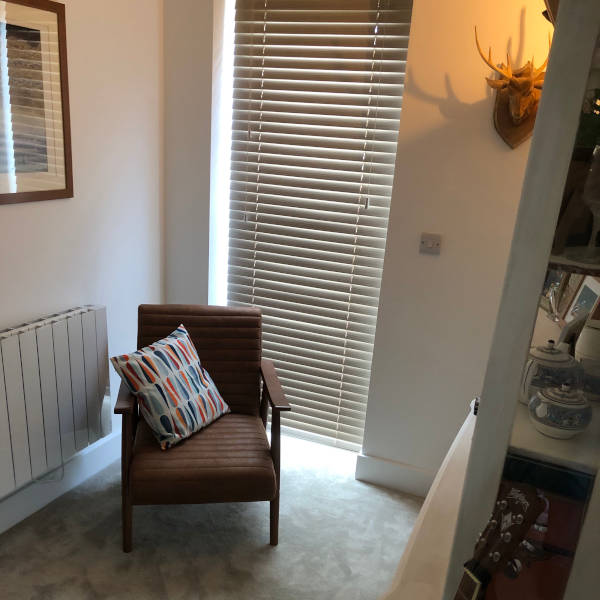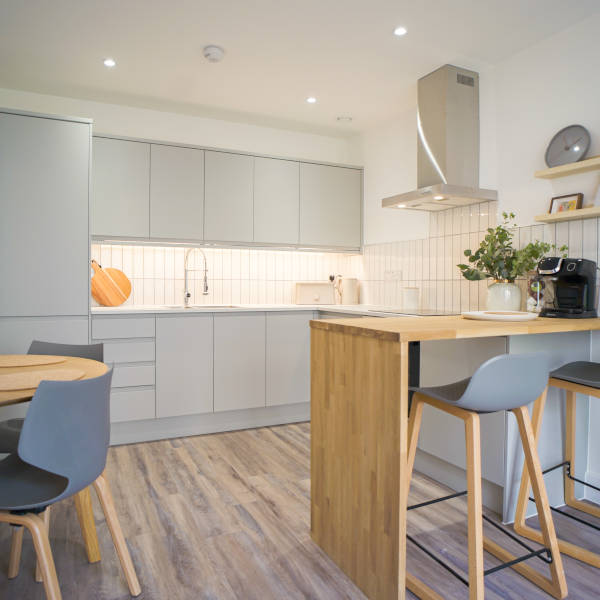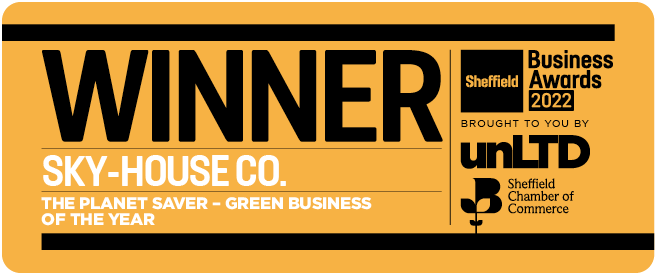Getting to know your solar system
Welcome to our guide to getting to know your solar panels in your Sky-House! The solar panels installed in your home are an investment in your property, helping to increase its value, save money and reduce your carbon footprint. This guide will provide you with useful information on how to make the most out of your solar panels and generate renewable energy for your home.
HOW SOLAR PANELS WORK
A solar PV panel consists of many cells made from layers of semi-conducting material, most commonly silicon. When light shines on this material, a flow of electricity is created.
The cells don’t need direct sunlight to work and can even work on cloudy days. However, the stronger the sunshine, the more electricity generated.
Solar PV systems are made up of several panels, with each panel generating energy in strong sunlight. Because the electricity used for household appliances is alternating current (AC), an inverter is installed along with the system to convert DC electricity to AC. This electricity can be used throughout your home.
PANEL USAGE
To enable you to get the most out of your PV panels, you may need to make some changes to your daily routine. These changes can help with cost savings and will ultimately be better for the environment.
During daylight hours, you’ll be generating electricity even on cloudy days, but if you’re using more power around your home than your panels are generating, or during the evening when your panels are not generating any electricity, you’ll be supplementing this by importing electricity from the grid. Utilising your solar power can help lower your bills and reduce your carbon footprint.
As your solar PV system will be working at its peak during daylight hours, it’s best practice to run your electrical appliances such as your washing machines and dishwasher during the day. If you’re at home, then this may be easier to do, but if you are away during the day, you could use any timer settings on your dishwasher, washing machine or other appliances that may benefit from this function.
It is recommended to use one major appliance at a time during daylight hours. Even when it is sunny, your panels may not provide enough free electricity to power more than one major appliance (e.g. cooker, hoover, kettle, iron, washing machine, tumble drier, dishwasher) at a time. Therefore, it is recommended to alternate the use of appliances throughout the day to get the most out of your solar power.
COMPONENTS OF YOUR SOLAR PANELS
Please see images below for the components that relate to your solar panels.
These have been installed as per factory settings and shouldn’t need to be changed.
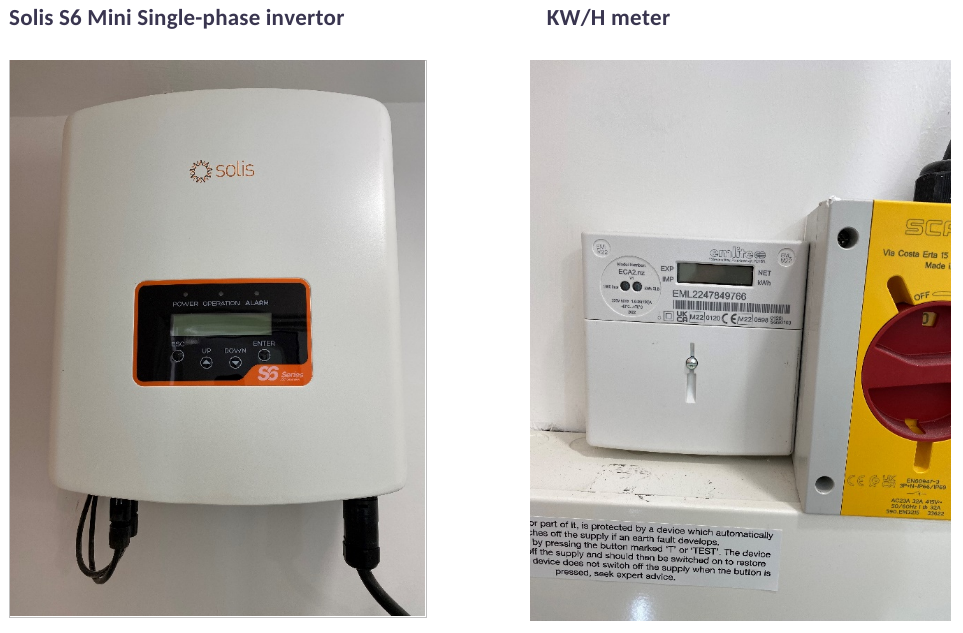
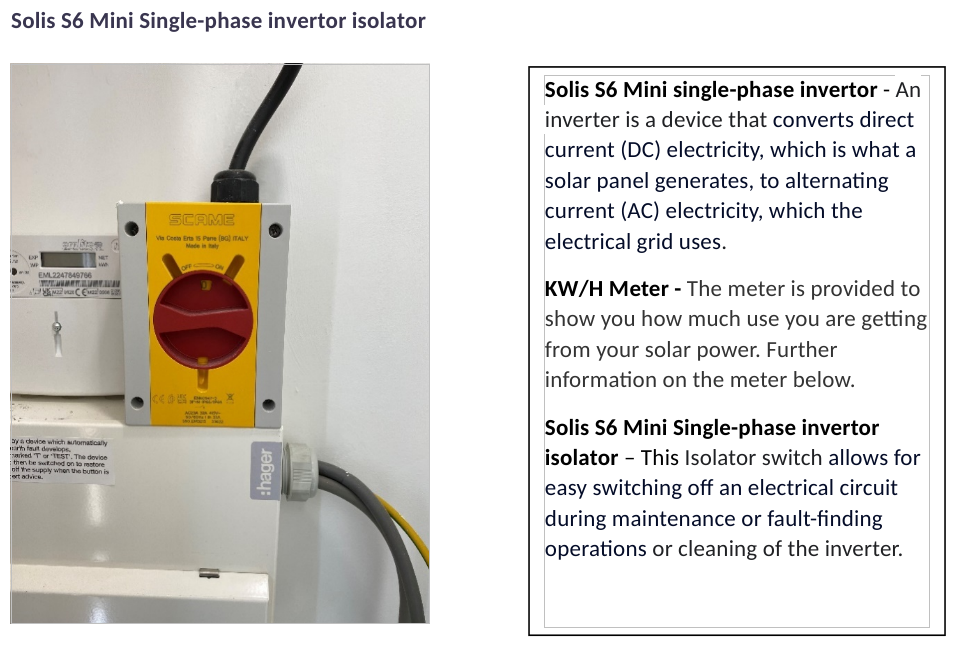
MAINTENANCE
Panels
Solar PV panels should last at least 25 years, with an occasional clean.
Cleaning Your Solar Panels
Cleaning your solar panels is important to maintain their efficiency and ensure that you are getting the most out of your system. We recommend having your solar panels cleaned by a specialist company to ensure that they are cleaned safely and effectively. Trying to clean the solar panels yourself could cause damage.
Maintaining your Solis S6 Mini Single -Phase Invertor
The Solis S6 Mini Single-Phase Inverter does not require any regular maintenance. However, cleaning the dust on heat-sink will help the inverter to dissipate the heat and increase its lifetime. The dust can be removed with a soft brush.
CAUTION: Do not touch the inverter’s surface when it is operating. Some parts of the inverter may be hot and cause burns. Turn off the inverter and wait for a cool-down period before any maintenance or cleaning operation.
The LCD and the LED status indicator lights can be cleaned with a damp cloth if they are too dirty to be read.
Never use any solvents, abrasives, or corrosive materials to clean the inverter.
TROUBLESHOOTING
The inverter is designed in accordance with the most important international grid-tied standards and safety and electromagnetic compatibility requirements.
Before delivering to the customer, the inverter has been subjected to several tests to ensure its optimal operation and reliability. In case of failure, the LCD screen will display an alarm message. In this case, the inverter may stop feeding into the grid.
The failure descriptions and their corresponding alarm messages are listed in the table below:


Table above taken from Solis S6 Mini Single Phase Inverter – Installation & Operation Manual
If the inverter displays any alarm message as listed in table, please turn off the inverter and wait for 5 minutes before restarting it If the failure persists, please contact your local distributor or the service centre.
Please refer to manual on the website which will list how to turn off and restart the invertor.
Link: https: www.solisinverters.com/uk/inverter
Meter
A meter is provided to show you how much use you are getting from your solar power. The KW/H number on your meter will show you how many KW/H of electricity you have generated and used since you moved into your property. This can be compared to the rate you are paying per KW/H to your electricity provider to give you an idea of the money you are saving. By using your solar power, you are helping to reduce your carbon footprint whilst saving money.
Answers to the most common issues can be found here using our guides.
← Back to the My Sky-House guides

